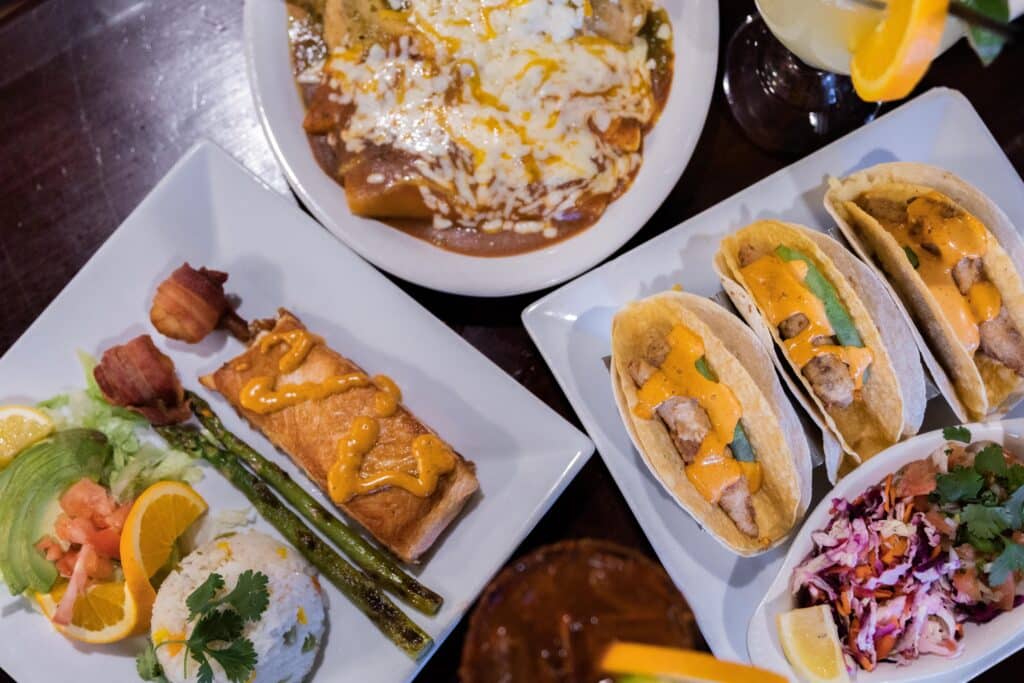
The vibrant world of food offers a fascinating journey through cultures, traditions, and flavors. When it comes to Mexican vs Spanish food, we encounter two culinary powerhouses that share historical roots but have evolved into distinct gastronomic experiences. While both cuisines boast delicious dishes and tantalizing aromas, their unique ingredients, cooking techniques, and regional variations create a world of flavorful differences waiting to be explored.
This article delves into the captivating realm of Mexican vs Spanish food, highlighting their defining characteristics, similarities, and key distinctions. From the bold spices of Mexico to the refined elegance of Spain, we’ll uncover the unique stories behind these beloved cuisines and provide insights into their regional variations and popular dishes.
Mexican Cuisine Characteristics
Mexican cuisine is a vibrant tapestry woven with bold flavors, fresh ingredients, and centuries-old traditions. At its heart lies a celebration of corn, beans, chili peppers, and indigenous spices that create a symphony of taste sensations. The use of tortillas, both soft and crispy, serves as the foundation for countless dishes, from savory tacos to comforting enchiladas.
Key Ingredients
The flavor profile of Mexican cuisine is defined by its signature ingredients:
- Chili Peppers: From mild ancho to fiery habanero, chili peppers are integral to Mexican cooking, adding heat, depth, and complexity to dishes.
Corn: Corn, a staple crop in Mexico for millennia, takes center stage in tortillas, tamales, atole, and countless other culinary creations.
Beans: Black beans, pinto beans, and kidney beans are essential components of Mexican cuisine, providing protein, fiber, and earthy flavors to soups, stews, and side dishes.
- Citrus Fruits: Limes and oranges add a refreshing tang to salsas, marinades, and sauces, balancing the richness of other ingredients.
Cooking Techniques
Mexican cooking techniques often involve slow simmering, grilling, frying, and roasting to bring out the natural flavors of ingredients.
- Mole: This complex sauce, made with chili peppers, spices, nuts, and chocolate, is a testament to Mexican culinary artistry. It’s typically served over chicken or turkey, creating a rich and flavorful dish.
- Tacos: These handheld delights are endlessly customizable, featuring various fillings like carne asada, al pastor, carnitas, or vegetarian options.
Spanish Cuisine Characteristics
Spanish cuisine is a diverse tapestry woven from regional influences, historical connections, and a deep appreciation for fresh ingredients. From the sun-drenched shores of Andalusia to the rugged mountains of Asturias, Spain offers a culinary journey that tantalizes the senses with its vibrant flavors and traditional dishes.
Key Ingredients
The foundation of Spanish cuisine lies in its use of olive oil, seafood, rice, and seasonal produce:
- Olive Oil: A cornerstone of Mediterranean cooking, olive oil is used generously in Spanish cuisine, adding richness, flavor, and health benefits to dishes.
Seafood: Spain’s extensive coastline provides an abundance of fresh seafood, which features prominently in many regional specialties. From paella to tapas, the bounty of the sea is celebrated in countless ways.
Rice: Rice plays a central role in Spanish cuisine, particularly in paella, a saffron-infused rice dish that showcases the country’s culinary creativity.
- Legumes: Lentils, chickpeas, and beans are staples in Spanish cooking, providing protein, fiber, and earthy flavors to soups, stews, and salads.
Cooking Techniques
Spanish cooking techniques often involve slow simmering, grilling, frying, and baking to create flavorful and satisfying dishes:
- Paella: This iconic rice dish originated in Valencia and is characterized by its saffron-infused broth, seafood, meat, and vegetables.
- Tapas: These small plates of food are a quintessential part of Spanish dining culture, offering a variety of flavors and textures to sample.
Similarities and Differences
While both Mexican vs Spanish food share some common ground due to their historical connections, distinct regional variations and culinary traditions set them apart. Both cuisines emphasize fresh ingredients, bold flavors, and the use of spices to enhance dishes. However, Mexican cuisine leans towards spicier profiles with a focus on corn tortillas, beans, and chili peppers, while Spanish cuisine features a wider range of seafood, olive oil, and rice-based dishes.
Regional Variations in Both Cuisines
Both Mexico and Spain boast diverse regional cuisines that reflect local ingredients, traditions, and cultural influences.
Mexico: From the coastal flavors of Baja California to the mole sauces of Oaxaca, each region offers a unique culinary experience. Northern Mexico is known for its Tex-Mex influence, while Yucatan cuisine features Mayan influences with dishes like cochinita pibil.
Spain: The regions of Spain are equally diverse, with Andalusia renowned for its tapas culture and paella, Catalonia famous for its seafood and crema catalana, and Basque Country celebrated for its pintxos (small snacks) and hearty stews.
Popular Dishes: Tacos vs. Tapas
When comparing popular dishes, Mexican vs Spanish food offer distinct culinary experiences.
Tacos: These handheld delights are a staple of Mexican cuisine, featuring a variety of fillings like carne asada, al pastor, carnitas, or vegetarian options, all wrapped in soft corn tortillas.
Tapas: These small plates of food are a cornerstone of Spanish dining culture, offering a wide range of flavors and textures to sample. From patatas bravas (fried potatoes with spicy sauce) to gambas al ajillo (garlic shrimp), tapas encourage sharing and exploration.
Conclusion
The difference between Mexican and Spanish food lies in their unique ingredients, cooking techniques, and regional variations. While both cuisines share historical connections and a passion for fresh flavors, they have evolved into distinct culinary experiences that reflect the rich cultural heritage of their respective countries. Whether you savor the bold spices of Mexico or the refined elegance of Spain, exploring these diverse cuisines offers a delicious journey through the world of food.
